Photo by Steve Nesbitt
Birds are a diverse group of warm blooded vertebrates characterised by their feathers. Almost 10,000 bird species can be found across the world in a range of habitats, with some species looking very similar but each having their own unique adaptations. Interestingly, the number of breeding species in a specific area is directly proportional to the size of the area and the diversity of the habitats available.
Birds vary greatly in size with almost all species adapted to fly, which is strongly reflected in their anatomy. Not only are wings shaped to create lift, their feathers, bones and muscles are specialised for flight. The feathers are narrowed to a point to streamline the bird, while the bones are hollow to reduce weight. Their digestive system is also specialised to allow them to eat while flying and digest later on. Even their reproduction is specialised to prevent them carrying the extra weight of their young, laying undeveloped eggs and incubating them in a nest.
As well as being specialised for flight, they have adapted to survive and thrive in their environment in other ways. They are warm blooded allowing them to survive in extreme temperatures and their feathers are able to trap warm air. A specialised cardiovascular system also allows birds to lose unwanted heat by increasing warm blood flow to the legs to be lost in hot weather.
Due to their ability to fly birds are found almost everywhere in the world. Many species live and visit the UK, with some staying all year round and others migrating to find warmer climates in the winter. As they are so diverse they can easily be spotted across the country in both rural and urban areas.
Grey Heron
Found close to water and woodland areas, herons are common in the UK, easily identified by their tall stature and long thin legs.
They are predominantly grey with a white neck and long yellow bill. A distinct black stripe runs from its eye and continues as long dropping feathers down its neck.
Preferring to feed in various waterways, fresh, salty, clear or muddy, herons can easily and skilfully catch fish and amphibians as well as preying on small rodents, reptiles and birds.
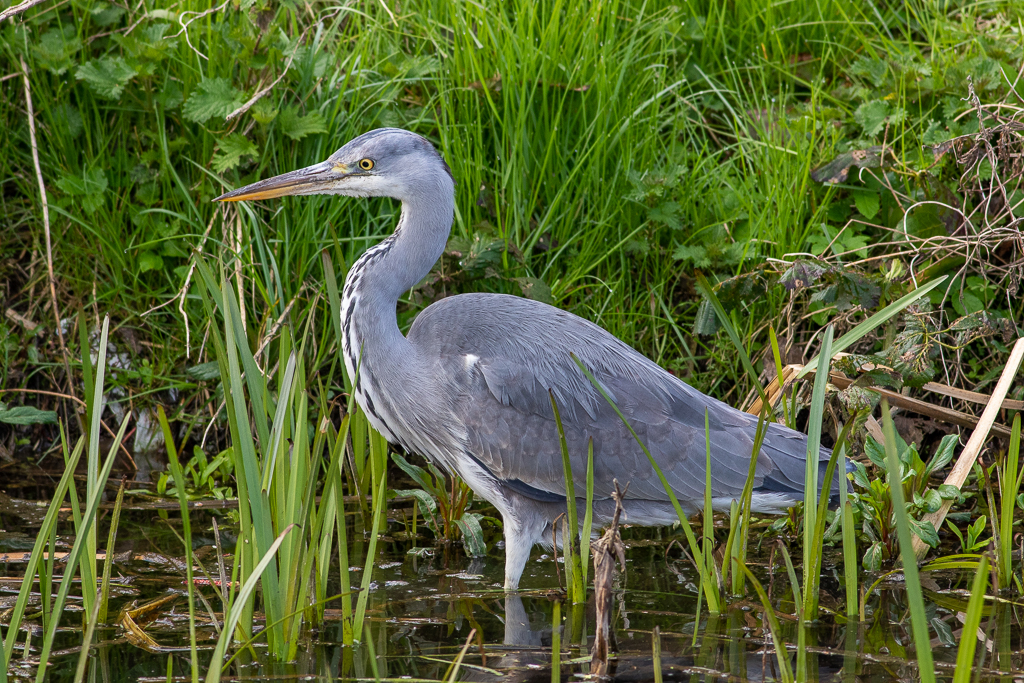
Found in the shallow waters of ponds, rivers and lakes throughout the UK, these birds are protected by Environmental Law.
Under these Laws, herons are:
- Protected by the Wildlife and Countryside Act, 1981
- Classified in the UK as green under the birds of conservation concern 4: the Red list for birds (2015)
Blue Tit
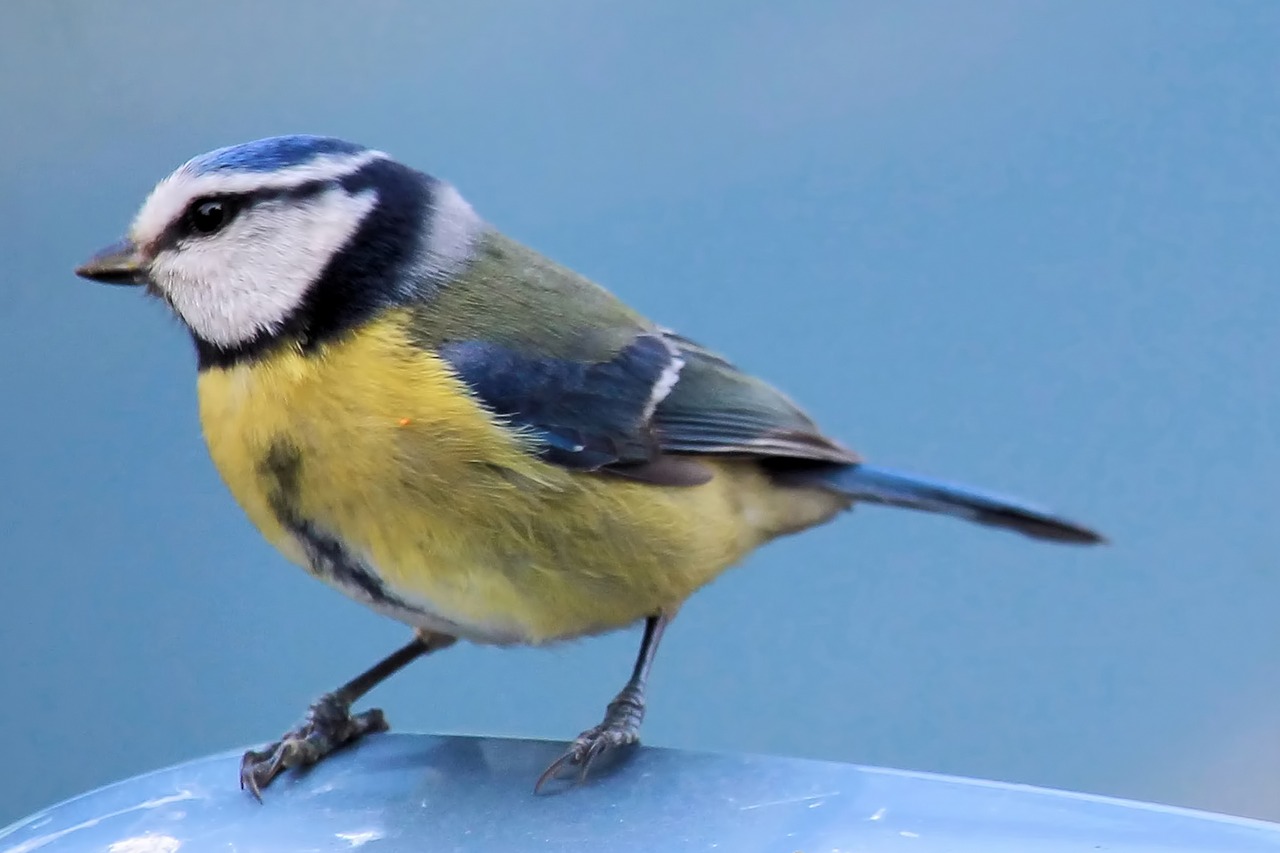
These small birds are only up to 12cm long, seen commonly throughout the UK from January to December.
Easily spotted by their bright blue cap, wings and tail and their yellow belly, these birds forage for insects and spiders as well as fruits and seeds.
Nesting in holes in trees Blue Tits are widespread in meadows and woodlands, buildings nests from January to March with the materials available to them.
On the search for food, they often join up with other tit species as groups to forage in the winter. Although this bird species is one of our most common in the UK, with an estimated 3.4 million pairs, they suffer diminished food supplies in the winter and are greatly helped by bird feeders available in gardens.
As these birds are established so well in the UK, they are classified as green under the birds of conservation concern 4: the red list for birds (2015).
Long Tailed Tit
Easily recognised by its long tail, this pink, black and white bird can be seen throughout the UK in woodlands, meadowlands and parks.
Eating mainly insects and invertebrates, these small birds eat their prey from vegetation and tree branches, as well as choosing to eat from bird feeders in the winter when food is scarce.
Requiring plenty of tree cover, long tailed tits build camouflaged nests from moss, lichen and feathers, nesting for about 5 weeks for eggs to hatch and chicks to fledge.
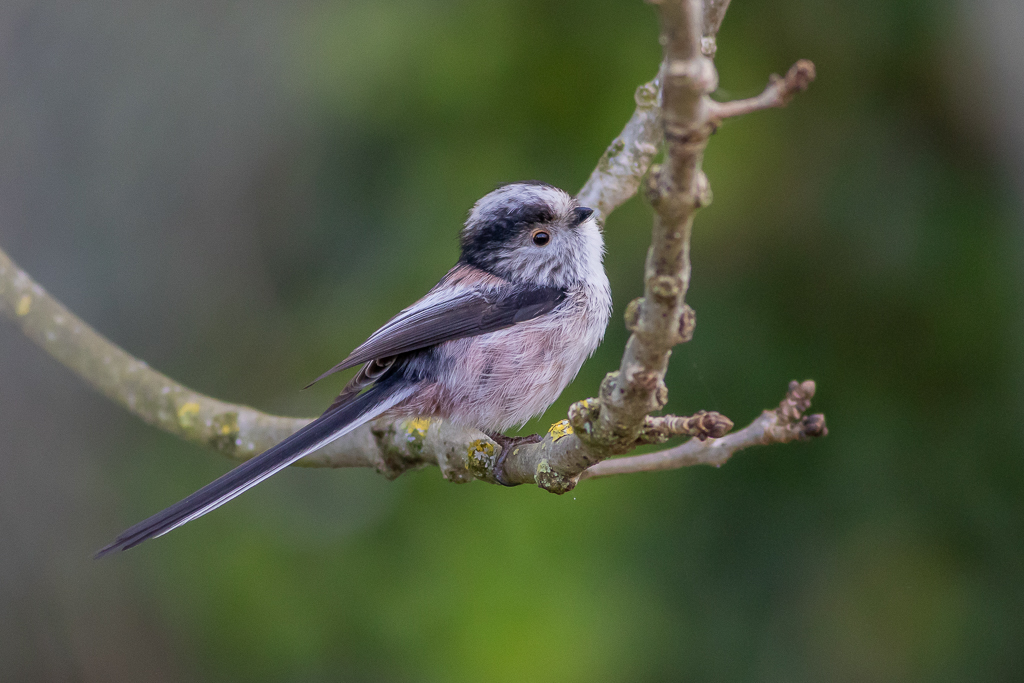
Similarly to blue tits, these birds often forage for food in groups with other small birds. However, they are also often found in groups of their own species throughout their lives, choosing to live in flocks rather than alone.
As they are widespread in almost every area of the UK, the long tailed tit is classified in the UK as green under the birds of conservation concern 4: the red list for birds (2015).
Chaffinch
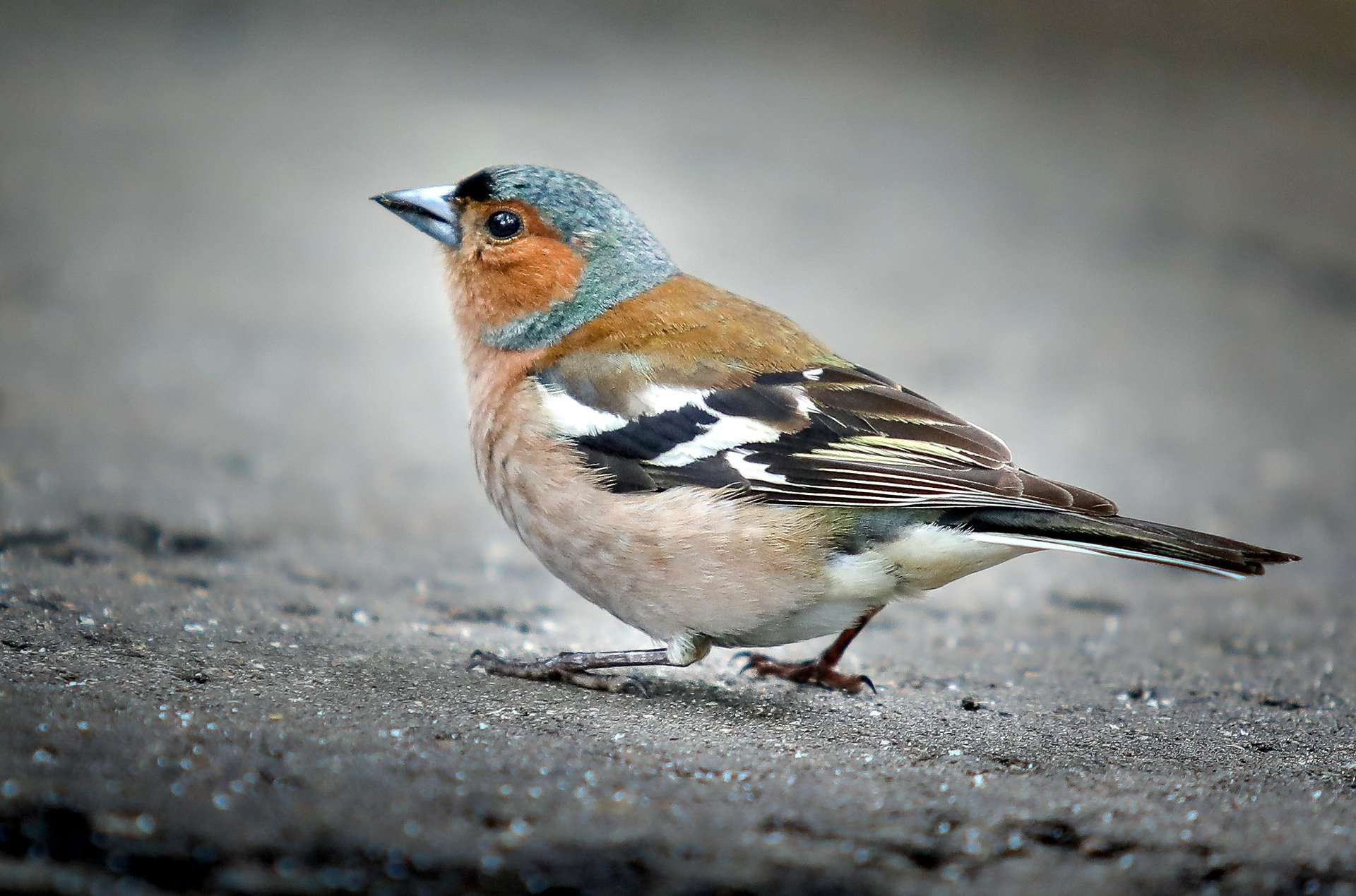
These colourful birds are widespread throughout the UK, living in woodlands and meadowlands as well as being commonly spotted in parks and gardens.
Easily identifiable by their blue-grey crown and pink breast, these birds feed on invertebrates and insects for most the year, changing to seeds as food becomes scarce.
Although their colours are widely recognisable, did you know that females of the species are a much duller brown colour with hints of green and yellow?
As they most commonly live in woodlands, chaffinches can forage for food in trees or on the ground, building round nests in trees and hedges with spider’s webs, moss, grass and feathers.
Being native to the UK, these birds are protected by Environmental Law.
Under these laws, Chaffinches are:
- Classified as green under the birds of conservation concern 4: the red list for birds (2015)
- Protected in the UK under the Wildlife and Countryside Act, 1981.
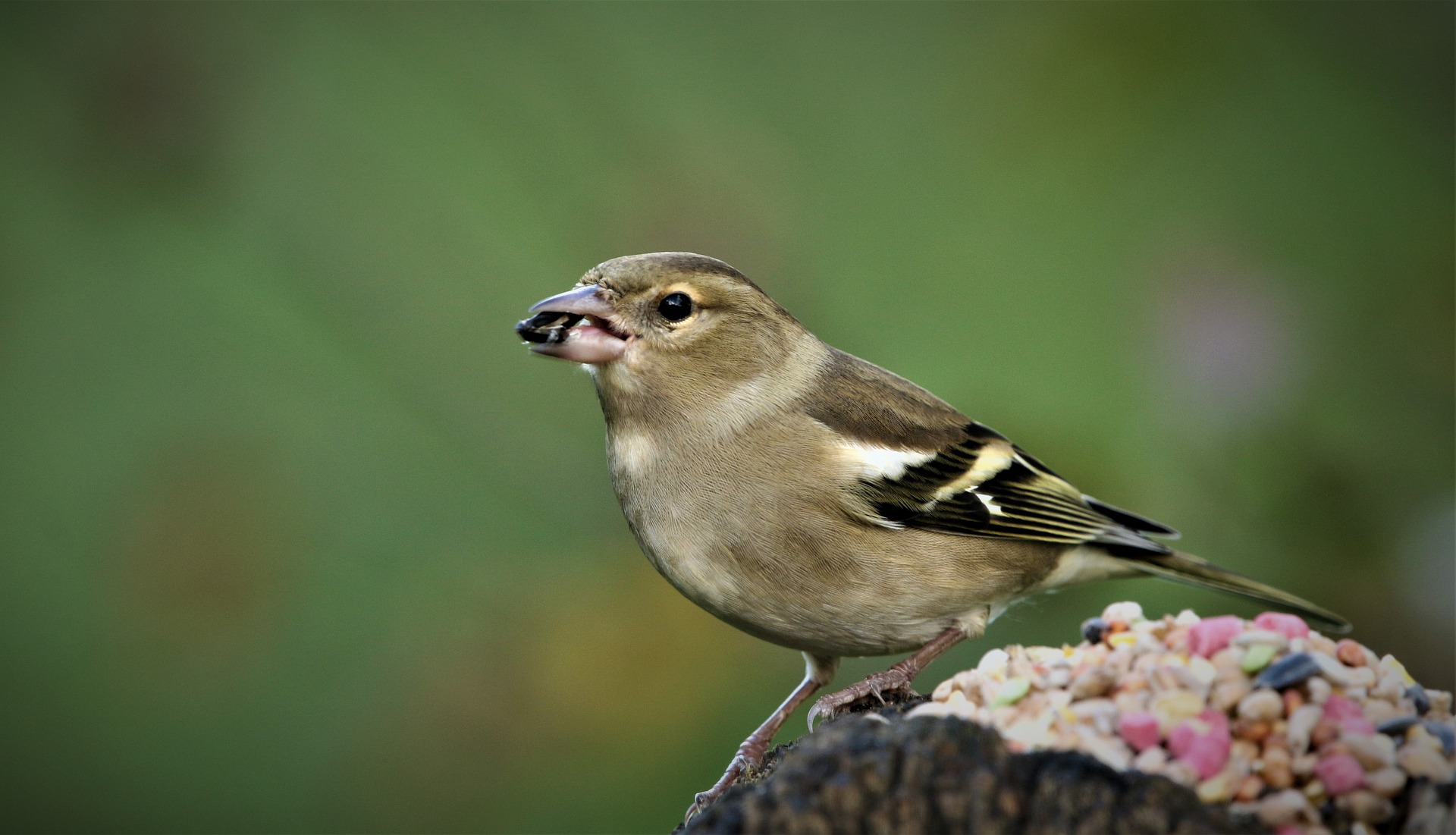
Grey Wagtail
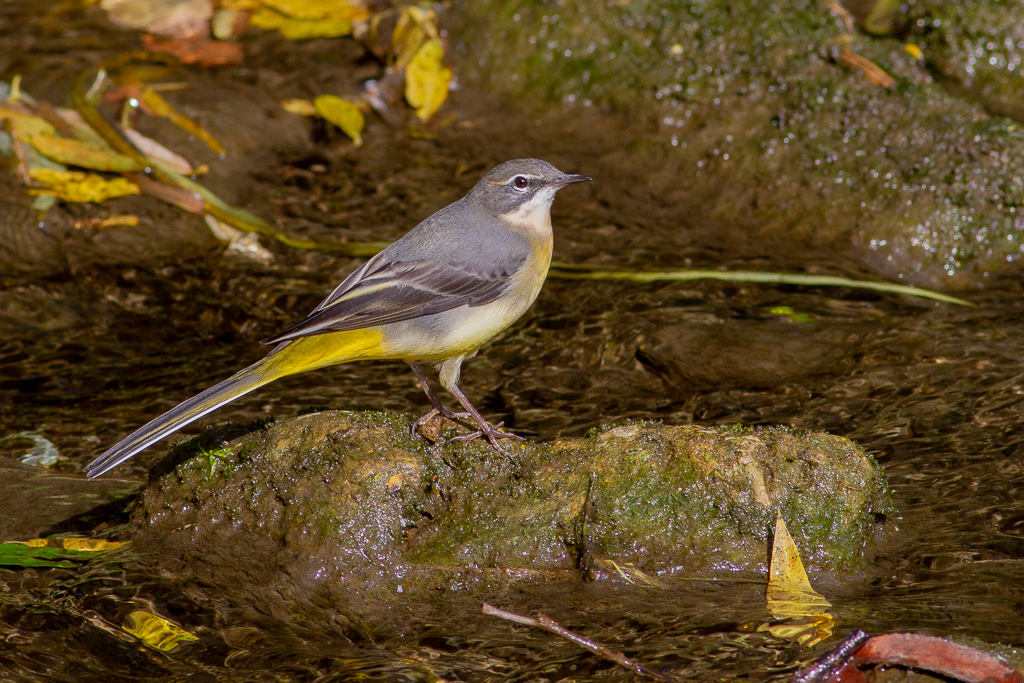
These relatively rare birds are found near fast flowing rivers, preying on small invertebrates and molluscs in shallow water and beside rivers.
Getting their name from their exuberant flight pattern, these interesting birds are constantly bouncing their tail in flight.
Best to see from January to December, Grey Wagtails nest near waterways in hollows and crevices amongst stones, lining them with moss and hair. However, as thier abundance can plummet in hard winters they often chose to migrate overseas to warmer climates.
As Grey Wagtails are relatively rare in the UK, with a population of only 38,000 breeding pairs, they are protected by Environmental Law. Under these laws they are:
- Classified in the UK as Red under the Birds of Conservation Concern 4: the Red List for Birds (2015)
- A Protected Species in the UK under the Wildlife and Countryside Act, 1981.
Song Thrush
Given their name for their sweet song call, these birds live in woodlands are parks, wherever there is a good supply of trees and bushes to nest in.
Song thrushes build their cup shaped nests low down in trees and shrubs. Notably, their nests are different to that of other species, made of dry plant stems with a smooth mud interior held together by salvia. Their nests can also be easily distinguished by their bright blue spotted eggs, up to 6 at a time.
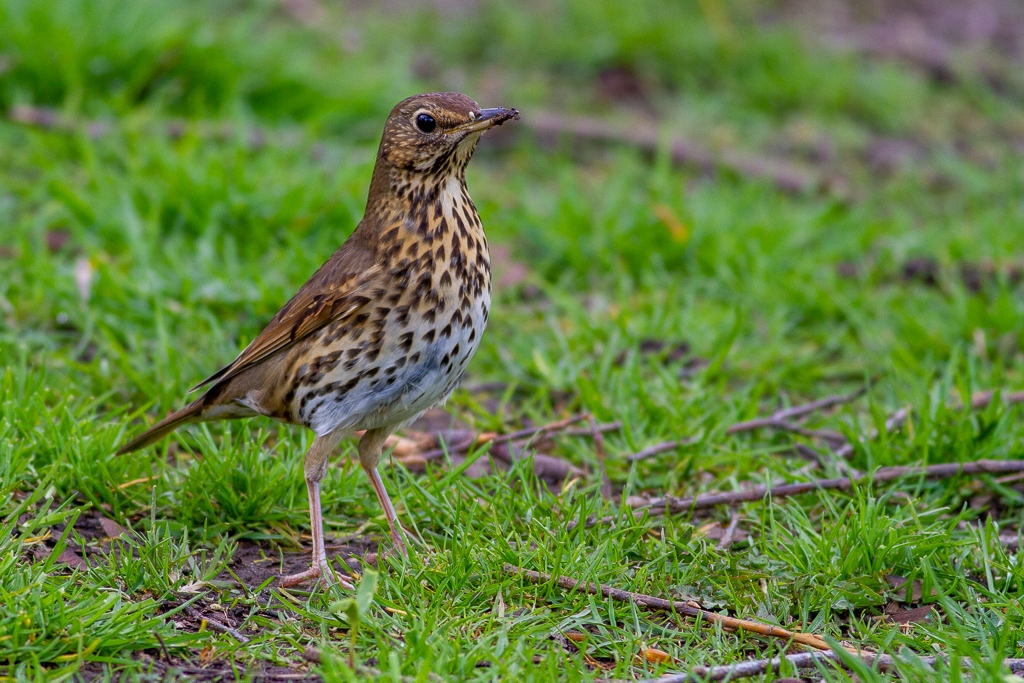
These brown and white birds, spotted with black droplet shaped spots, have a varied diet but are widely known for eating earthworms and their unique way of eating snails. This interesting method involves hitting them against hard rocks or stones to crack open the shells.
Under environmental law, Song Thrushes are:
- Classified in the UK as red under the birds of conservation concern 4: the red list for birds (2015)
- Protected in the UK under the Wildlife and Countryside Act, 1981
- A Priority species under the UK Post-2010 biodiversity Framework.
Kingfisher

Spotted along waterways the bright blue and metallic copper colours of Kingfishers stand out against their surroundings, enabling onlookers to see the colourful species foraging and diving into the water.
Living in burrow-like nests near waterways, Kingfishers are rarely seen away from bodies of water, choosing to perch on low hanging branches and fish along river courses.
This widespread species eats not only fish, but also any crustaceans, amphibians and reptiles it can find through its habitat. However they will commonly only dive up to 25cm into the river, making some animals out of their reach!
In order to ensure they have enough food sources to last until spring, when food becomes more abundant, Kingfishers establish their territories at the start of winter.
Protected by Environmental Law, Kingfishers are:
- Classified in the UK as Amber under the Birds of Conservation Concern 4: the red list of birds (2015)
- A Protected Species in the UK under the Wildlife and Countryside Act, 1981.
Robin
Widely recognised for its distinctive red breast, robins can be seen all year round in parks, gardens and woodlands.
They choose to build nests in ivy and shrubs but often they can be found in man made structures such as plant pots and shelves in srtuctures outside.
Did
you know robins are very territorial birds, actively defending their
territories from other birds of the same species? So much so that females are only allowed into a territory during breeding season when they build
nests out of dead leaves, moss and hair.
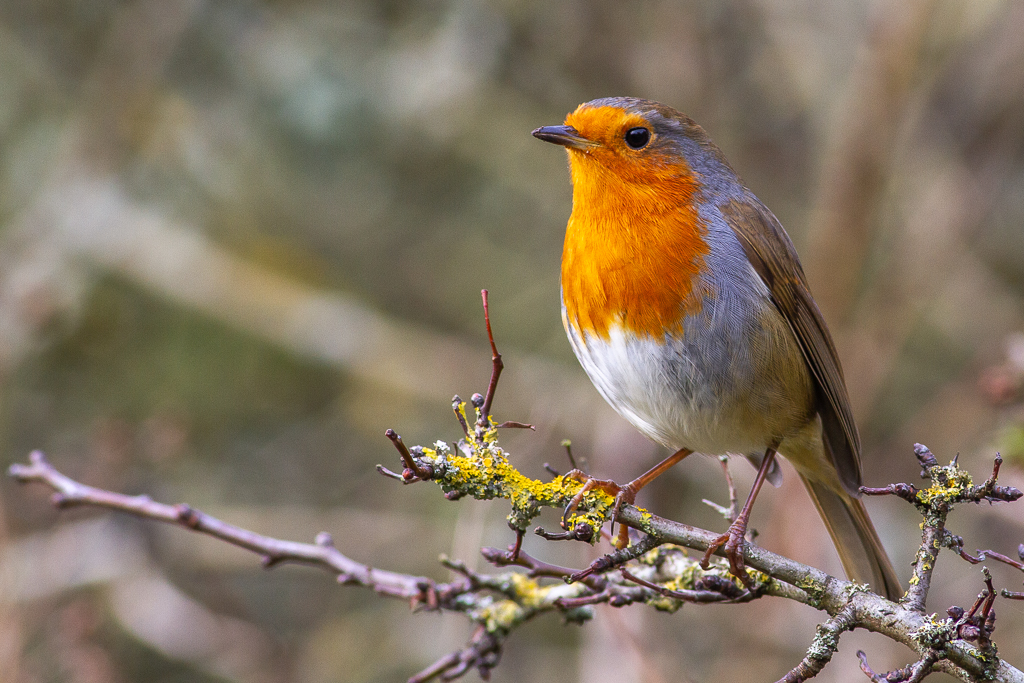
Robins have two or three broods a year with chicks fledging after about two weeks. However, chicks have a surprising low survival rate with only 57% of eggs resulting in fledglings. The reason for this is that although robins are fiercely territorial against their own species, they often let birds of other species near their nests, leaving them open to predation. Interestingly, robins also tend to feed the chicks of other species as well as their own, most commonly song thrush and blackbirds.
Protected by Environmental Law, Robins are:
- Classified in the UK as green under the birds of conservation concern 4: the red list for birds (2015)
- Protected by the Wildlife and Countryside Act, 1981
Red Kite
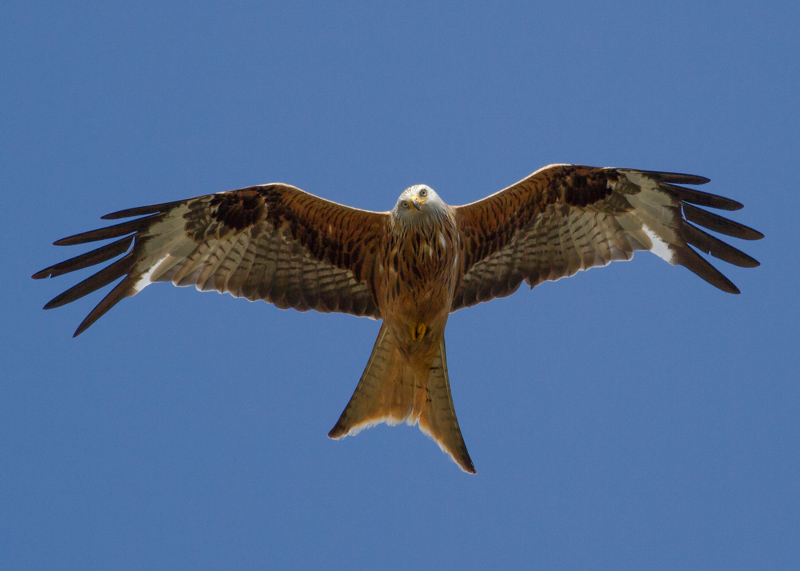
Now more commonly seen across the UK, being most abundant in Wales and the east of England, this amazing bird of prey has been successfully reintroduced in the UK after several attempts.
Distinguished by their large angled wings, spanning up to 1.8m, and reddish-brown forked tail, Red Kites can often be seen scavenging for food through a variety of habitats.
Seen from below with white patches and dark wing tips, these birds nest high in the canopy of broadleaved woodlands. Their nests are unlike most others, lined with sheep’s wool, and are messy, scattered with random objects such as paper, plastic and cloth.
Interestingly, mating pairs will return to the same nests each year, adding new material during the breeding season. Red Kites only produce one clutch of about 3 eggs a year and will protect them until they hatch, looking after the chicks for about 60 days until they fledge.
Using their striking pale eyes Red Kites can hunt out small prey such as voles and mice. However, as they are mostly scavengers, they commonly eat roadkill and carrion. This makes them a great addition to the ecosystem by clearing up the landscape.
Unfairly hunted close to extinction due to being thought of as a threat to game birds and domestic pets, these magnificent birds are now protected by law. Under these laws, Red Kites are:
- Protected in the UK under the Wildlife and Countryside Act, 1981.
- Classified as Green under the birds of Conservation Concern 4: the Red list for birds (2015)
- Listed as Near Threatened on the global ICUN Red list of threatened species.
Common Buzzard
Found across the UK, Common Buzzards are usually found in woodland, farmland and moorlands, but can survive in most habitats. They are large birds with broad rounded wings, spanning up to 120cm, with a short tail. Their colourings however, are quite variable depending on their feathers. Typically they are brown with white patches beneath the breast and underneath the wings. Yet, marked differences can be seen when some individuals are paler shades with far more white feathers than brown.
With a hooked beak and large feet equipped with sharp talons, these birds are amazing predators able to hunt a variety of prey. They often scavenge on roadkill but as they are extremely opportunistic predators they prey on rabbits and rodents, even occasionally smaller prey like earthworms. Interestingly, these birds have different hunting methods for different types of prey, hunting from a perch or soaring over their territories to catch bigger prey and walking along the ground to catch invertebrates at the surface.
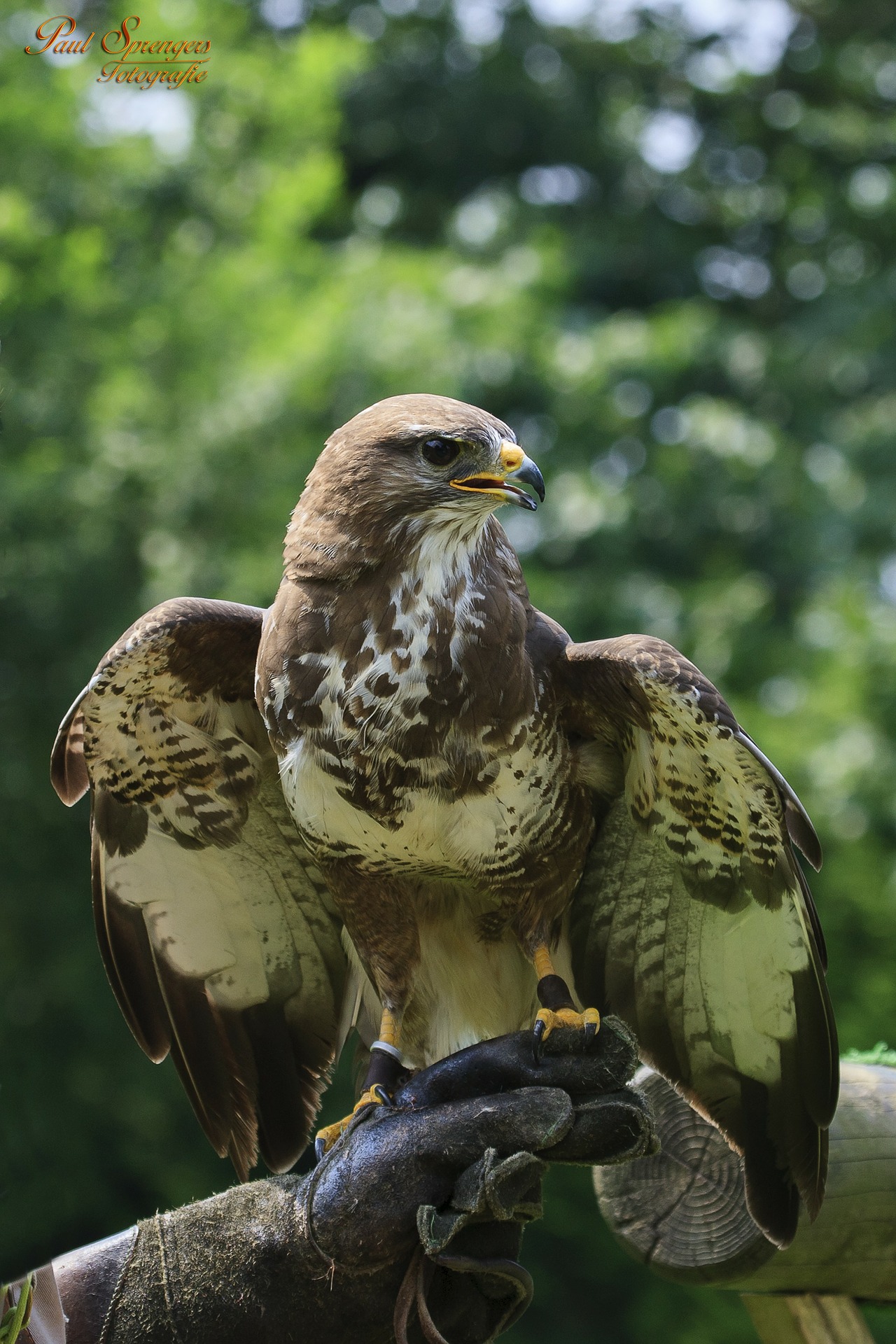
Did you know that, as these buzzards pose a significant threat to smaller birds, they are often ‘mobbed’ by other birds such as crows and magpies, which harass the buzzards until it flies away?
Their flexible diet allows them to survive in a variety of habitats. However, they choose to build their large nests in woodlands using twigs and branches and lining them with moss and vegetation. In which they will lay 2-4 eggs which take two months to fledge after hatching. Although they can stay longer as the strong maternal instincts of buzzards keep them safe and fed for several more weeks.

Common Buzzards are now the UK’s most common bird of prey with an estimated 70,000 breeding pairs across the country. However, this is a fairly recent development, with numbers having quadrupled since 1970. Before then they were targeted as a perceived threat to gamebirds, which has since been dismissed as they are only occasional prey. Along with getting legal protection and a reduction in the use of harmful pesticides, this has allowed the species to flourish.
As these birds have been able to significantly re-establish in the UK they are classified as Green under the Birds of Conservation Concern 4: The Red List for Birds (2015).
Chiff Chaff
Commonly spotted in parks and gardens, Chiff Chaffs can be seen throughout the year across the UK. Some groups chose to migrate, flying to warmer climates in the autumn, whereas some choose to stay in the UK all year round. Notably, these birds are increasingly taking advantage of the UK’s warmer climate and up to 1000 birds are now though to spend the whole year here.
Named for its chiff chaff chiff chaff song, these dull green and brown birds nest close to the ground, concealing themselves among shrubs and vegetation. Choosing to build domed nests out of stems and leaves, lined with feathers these birds can easily hunt invertebrates on the surface so close to their nests. Although their small nests are hidden among brambles and nettles they are still predated by larger birds such as sparrowhawks, snatching eggs and chicks.
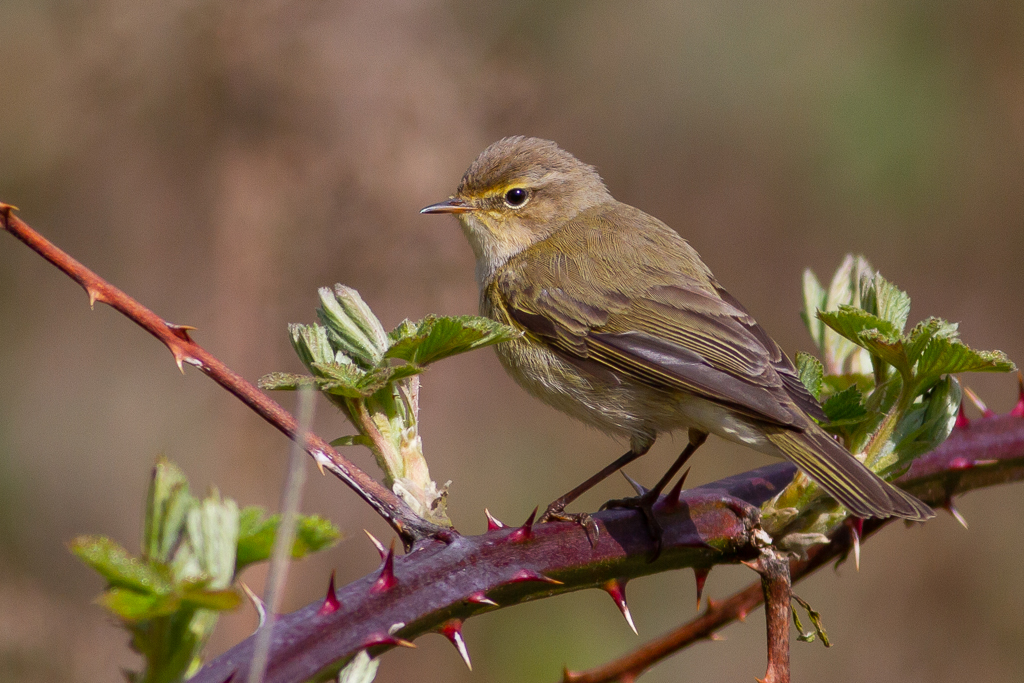
Chiff Chaffs are one the UK’s smallest birds, however they are not the only small bird that is commonly seen throughout the UK. These birds look very similar to Willow Warblers, being very similar in colour and found in similar habitats. From stationary, the easiest way to determine the species are the legs. Chiff Chaffs have dark legs whereas Willow Warblers have much lighter brown coloured legs. In flight it is much easier to tell, with the Chiff Chaffs continuously flicking their tails.
Black Cap

Once just summer visitors, these birds can now be seen all year round, most commonly in woodlands and winter gardens when they rely on seeds as food becomes scarce. However, their preferred diet is insects and berries, efficiently spreading berry seeds such as mistletoe by eating the flesh of the berry and wiping the seed on a branch, allowing it to germinate.
Black Caps are a similar size to robins, about 13cm long, and can be easily confused with the marsh tit and yellow tit, identifiable by the lack of black bib. Adult males have a black cap, giving them their name, and females and young males have a gingery-brown cap.
Predated by sparrowhawks and cats, Black Caps hide and nest in hedges and brambles, building cup shaped nests to hold their young. Once hatched, around June, chicks fledge after 2 weeks and are fed for a further 2 or 3 weeks until they leave the nest. Being common in the UK, they are classified as Green under the Birds of Conservation Concern 4: the Red List for Birds (2015).
Moorhen
These familiar birds are commonly seen along waterways throughout the UK. Similar to a Coot, Moorhens can be distinguished by their yellow legs, red beak and white patches.
As omnivores, Moorhens have a varied diet, eating insects, berries, birds eggs, small fish and can even climb trees in search of food. They can fly, although only a short distance using a large amount of energy.
Preferring to live close to vegetation, Moorhens will take refuge when disturbed and build its nests with nearby terrestrial and emergent vegetation. Tending to be solitary birds they will aggressively defend their nests and can violently strike opponents with their feet and even try to push them underwater.
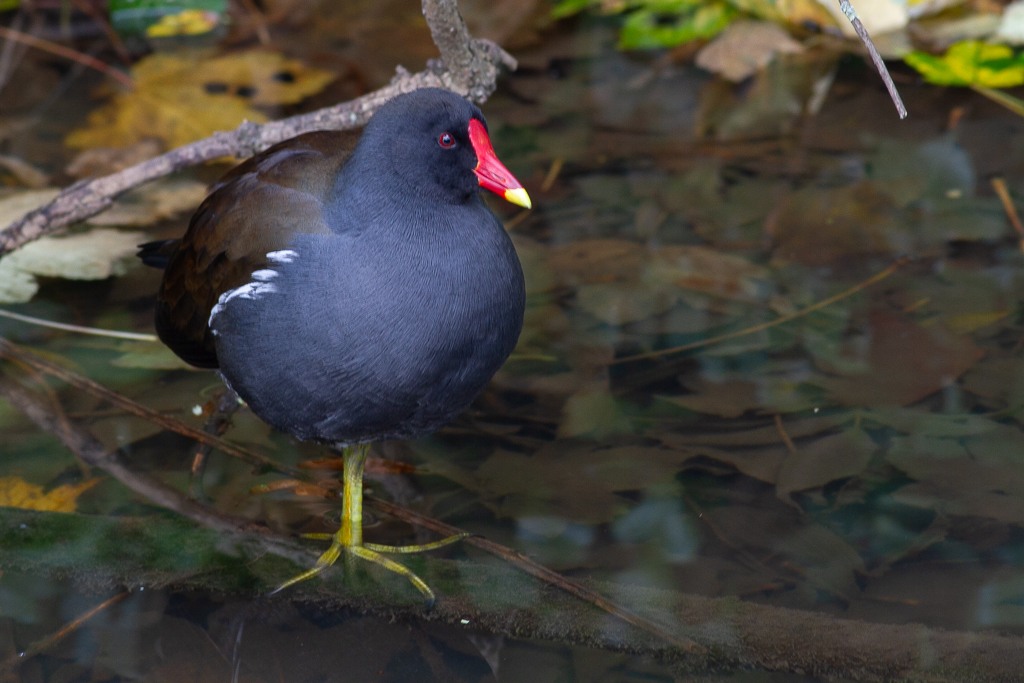
Did you know that Moorhens are one of the world’s most common birds? In the UK alone there are up to 270,000 breeding pairs. As such, they are classified in the UK as Green under the Birds of Conservation Concern: The Red List for Birds (2015).
Blackbird

Commonly found in gardens and parks, Blackbirds are widely recognised by their black feathers and yellow bill with a yellow ring around the eye. Although only adult males are entirely black, juveniles and females have brown feathers, with juveniles distinguished by gingery streaks along their bodies.
Similarly to other birds Blackbirds eat berries, insects and seeds. However, as they are able to hear movement just beneath the grounds surface, they can also often be spotted listening for earthworms. Another sign of their presence is the noise of rustling leaves as they hunt through fallen leaves, flipping them over as they go, in order to find food.
Foraging for food on the ground is useful when their nests are built so close to the surface in areas with enough cover and vegetation. Their nests are round and well hidden to avoid predators and made where they are less likely to be seen from higher ground. Although they are found in high abundance currently, there have been periods of decline, mostly due to lack of food availability. However, as they are presently common they are classified as Green under the Brds of Conservation Concern 4: The Red List for Birds (2015).
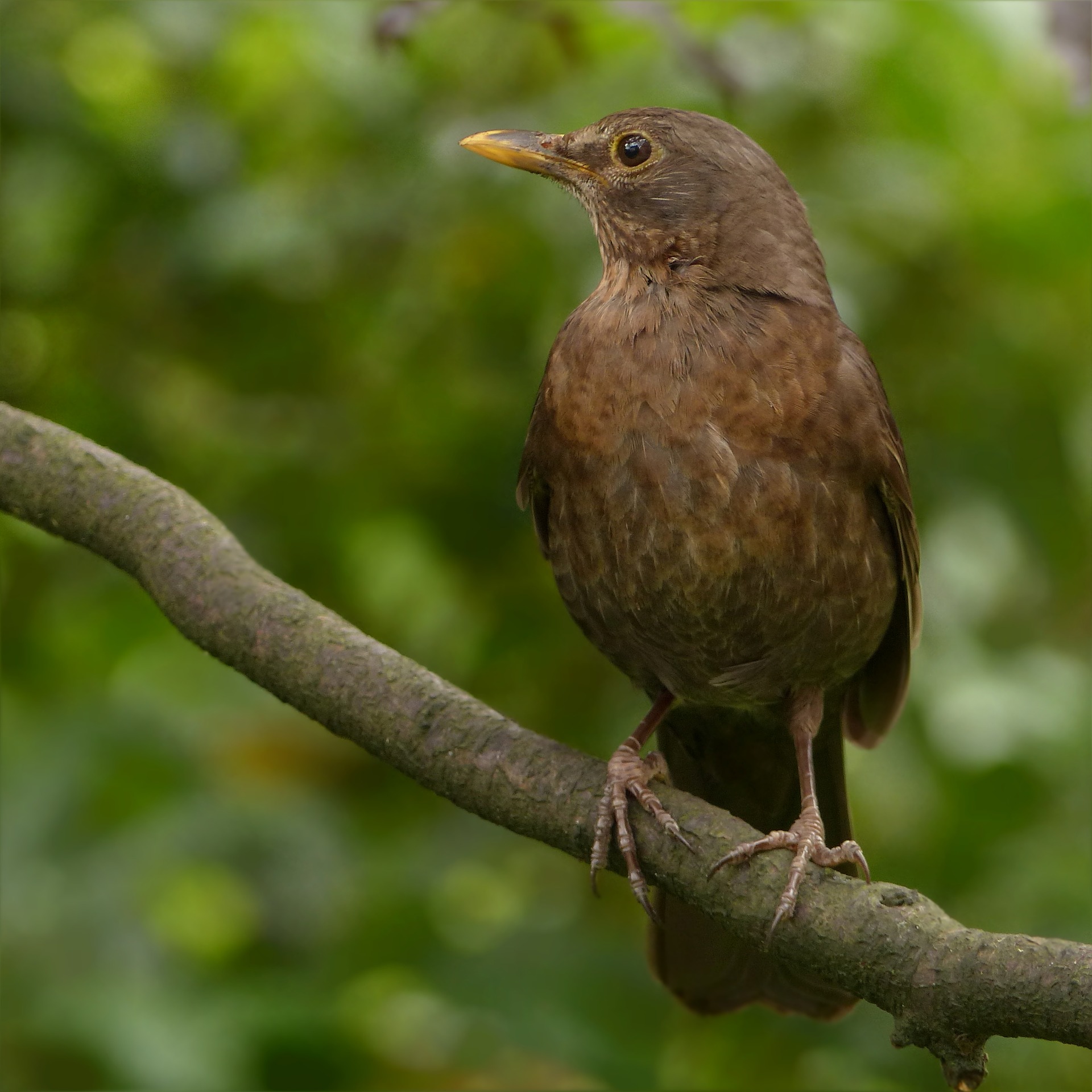
Wren
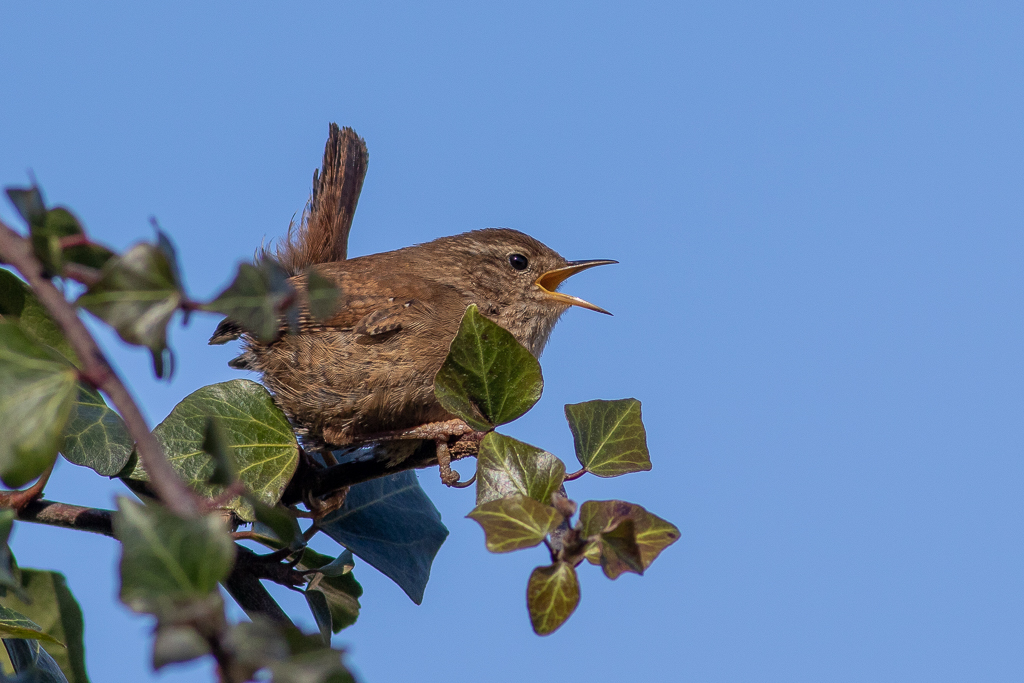
Found almost anywhere with enough insects to eat and bushes or crevices to build nests in, these small birds, weighing only 10 grams, are one of the most common breeding birds in the UK, with 8.6 million breeding territories.
Less common in upland areas, Wrens prefer sheltered areas to live, building their nests out of moss and twigs, hidden from predators such as cats and foxes. Did you know that male Wrens will build a selection of nests for females to choose from during breeding season?
These small plump brown birds have sharp pointed bills enabling them to eat berries, seeds, insects and even tadpoles. They usually forage for food close to the ground but are heavily affected in winter as insect numbers fall and so they struggle to survive. However, being found in high abundance for the majority of the year, they are classified in the UK as Green under the Birds of Conservation Concern 4: the Red List for Birds (2015).






